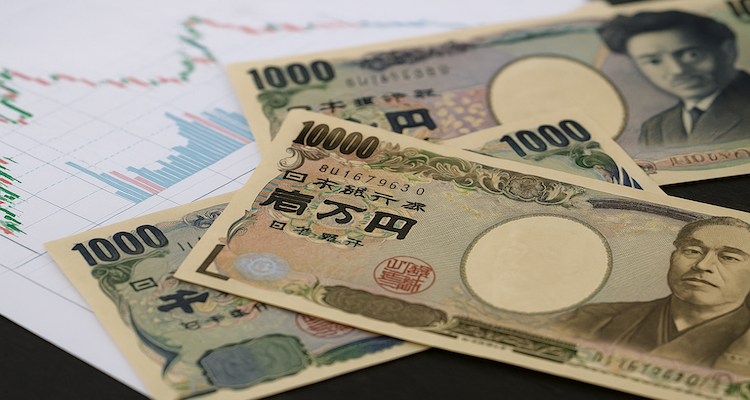Yen Slips as Traders Weigh BOJ Policy, Leadership Vote
The yen eases after its strongest week in months as markets eye BOJ policy signals and Japan’s leadership election, while the dollar steadies despite a U.S. data blackout.
A Currency Crossroad
The Japanese yen lost ground on Friday, paring back its sharpest weekly advance in more than four months. The pullback came as investors weighed signals of further rate hikes from the Bank of Japan (BOJ) and braced for a weekend leadership election that could reshape Japan’s political and economic direction.
BOJ Signals Steady Path Toward Higher Rates
BOJ Governor Kazuo Ueda reaffirmed that the central bank would continue to lift interest rates if the economy and inflation evolve as expected. His stance kept traders on alert, with speculation mounting that another rate increase could arrive at the BOJ’s October 30 meeting.
Recent central bank commentary was closely scrutinized after Wednesday’s tankan survey showed rising optimism among Japan’s large manufacturers for the second consecutive quarter. Deputy Governor Shinichi Uchida added that corporate profits remain robust, even as U.S. trade tariffs weigh on exports.
Political Uncertainty: LDP Leadership Vote Looms
Markets are also watching Saturday’s Liberal Democratic Party (LDP) leadership election, which will determine the country’s next prime minister. Analysts suggest that political uncertainty could amplify volatility in the yen, particularly as traders balance policy expectations with leadership outcomes.
Dollar Holds Despite Data Blackout
The U.S. dollar staged a rebound overnight, supported by haven flows, even as a government shutdown delayed the release of key economic reports including September’s highly anticipated jobs data.
According to Hirofumi Suzuki, chief currency strategist at SMBC, the shutdown has not immediately rattled markets. However, he cautioned that “pressure on the dollar remains tilted to the downside” as investors anticipate rate cuts later this year.
Market Moves: Yen, Dollar, Euro, and Loonie
-
The yen slipped 0.2% to 147.52 per dollar, but remained up 1.3% for the week, marking its strongest performance since mid-May.
-
The dollar index edged up 0.1% to 97.895, while the euro held steady at $1.1721.
-
The Canadian dollar hovered near a four-month low, trading at 1.3962 per U.S. dollar, pressured by a 2% drop in oil prices and concerns over trade negotiations.
U.S. Labor Market Concerns
In the absence of official data, a Chicago Fed model estimated the U.S. unemployment rate at 4.3% in September unchanged from August suggesting that a sharp deterioration in the job market has not yet materialized.
However, signs of weakness remain. The ADP report earlier this week revealed a 32,000 drop in private payrolls, reinforcing expectations that the Federal Reserve will deliver two more rate cuts in 2025.
According to the CME FedWatch Tool, markets are pricing in a 90% chance of a 25-basis-point cut in October, followed by another in December.
Fed Voices: Cautious on Further Cuts
Dallas Fed President Lorie Logan defended last month’s rate cut as necessary insurance against a labor market shock but signaled reluctance to accelerate easing. She stressed that the slowdown has been “gradual,” indicating that the Fed is not in a rush to slash rates further unless conditions worsen.
Canada’s Currency Under Oil and Trade Pressure
The Canadian dollar extended its weakness, touching 1.3986 per U.S. dollar on Thursday, its lowest intraday level since May 16. A combination of falling crude prices and uncertainty surrounding the renewal of the U.S.-Mexico-Canada trade pact kept the loonie on the defensive.
Expert Take: Balancing Policy and Politics
IG Markets analyst Tony Sycamore noted that Governor Ueda’s comments may be setting the stage for another BOJ rate hike later this month. “Ueda is guiding markets toward further tightening, but the leadership election adds another layer of unpredictability,” he said.
Suzuki of SMBC added that yen-depreciation pressure is unlikely to disappear until the election outcome provides clarity, keeping the yen-dollar pair “hovering around current levels.”
Outlook: What’s Next for Global Currencies?
The yen’s short-term trajectory hinges on both domestic politics and central bank guidance. A decisive LDP leadership result and firm signals from the BOJ could determine whether the yen sustains its momentum or retreats further.
Meanwhile, U.S. dollar traders face a unique challenge: navigating rate-cut expectations without the usual stream of economic data. Across the border, Canada’s dollar remains tethered to energy markets and trade policy developments.
A Weekend of High Stakes
With political shifts in Japan, Fed policy debates in the U.S., and trade uncertainties in North America, global currency markets are bracing for a turbulent October. The yen’s weekly surge may prove short-lived if leadership outcomes and BOJ policy guidance diverge from expectations.
(Disclaimer: This article is for informational purposes only and does not constitute financial advice. Currency trading involves significant risk and may not be suitable for all investors.)
ALSO READ: Asian Stocks Gain as Fed Rate Cut Bets Offset Shutdown Jitters











